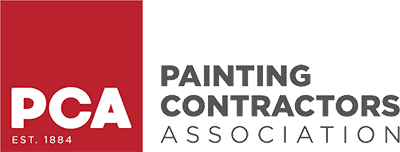How many coats of primer do I need? It’s one of the most common questions we get from building owners and facility managers.
The answer depends on a few key things like what you’re painting over, the type of surface, and the color you plan to use.
In a place like Muskegon, MI, where commercial buildings face a mix of heat, moisture, and wear, primer can make or break your finish. Whether you’re painting drywall, wood, plaster, or metal, understanding when one coat is enough and when it’s not—can save time, money, and frustration.
Here’s what business owners and commercial painters in Muskegon, MI need to keep in mind.
Key Takeaways:
- How many coats of primer do I need? One coat of primer may be enough for clean, smooth surfaces or similar color changes.
- Two coats are ideal for new drywall, unfinished wood, or switching from dark to light paint.
- Three coats are sometimes needed for textured walls, heavy stains, or high-moisture areas.
- The surface type like wood, drywall, or masonry impacts how many coats are necessary.
- Commercial painters in Muskegon, MI assess materials and conditions to apply primer correctly for long-lasting results.

Primer’s Job: More Than Just a Base Coat
Primer isn’t just something you slap on to get to the fun part. It’s what sets the stage for proper adhesion, coverage, and durability. Without it, paint can peel, stain, or just look plain uneven.
A good coat (or two) of primer:
- Seals drywall and porous surfaces like concrete and masonry
- Blocks stains, water marks, and even old mildew
- Helps paint grip—especially when switching from a glossy to flat paint
- Keeps strong colors from bleeding through
- Cuts down how many topcoats you’ll need
When you’re painting over mixed surfaces (like patchy joint compound, raw wood, or high-porosity plaster), skipping primer or using too little often leads to inconsistent coverage and early failure.
When One Coat of Primer Is Usually Fine
One coat might be enough, but it depends. Here are a few scenarios where a single coat can get the project done:
- Painting over similar colors: White to off-white, or beige to gray? You’re probably safe with one coat.
- Pre-primed surfaces: Many new building materials, especially siding and some drywall panels, come factory-primed.
- Clean, smooth walls: If your wall is already painted, in great shape, and you’re not making a big color change, one coat is fine.
- Low-traffic areas: If it’s a storage room or mechanical closet, you don’t need to go overboard.
Still, even in these cases, commercial painters in Muskegon, MI will often apply a second coat if they notice spotty adhesion or inconsistent coverage after drying.
When to Go With Two Coats of Primer
Most commercial painting projects need at least two coats of primer, especially when:
- You’re covering dark paint with a lighter color
- The surface is unfinished wood which tends to absorb primer unevenly
- You’re working with new drywall that soaks up paint like a sponge
- There are water stains, mold, or smoke damage on the surface
- The building has exposure to heat, humidity, or temperature swings
Two coats help even out porosity, especially with patchy materials like joint compound or aged drywall. It also gives your topcoat something smooth to stick to whether you’re using latex, oil paint, or behr brand paints.
When Three Coats of Primer Make Sense
Three coats isn’t common, but sometimes it’s the right call. Certain situations demand more effort up front to avoid problems later.
Go for a third coat when:
- You’re painting over textured masonry, old plaster, or popcorn ceilings
- There are deep or persistent stains from mildew, grease, or lead-based paint
- Your surface was patched heavily and feels uneven to the touch
- You’re dealing with surfaces exposed to moisture like bathroom walls or high-humidity zones
In commercial buildings, we see this often in older facilities or industrial settings. Adding an extra coat is way easier (and cheaper) than redoing a full coat of top paint down the road.
How Commercial Painters in Muskegon, MI Approach Primer
Experienced pros don’t guess—they evaluate. Before applying anything, they’ll check for:
- Dust, debris, or loose material that needs cleaning
- Sandpaper-ready surfaces to help primer bond
- Material type: metal, wood, drywall, concrete, etc.
- Moisture levels, especially near foundations or bathrooms
- The existing color and final paint plan
They’ll also test adhesion on tricky spots and double back if the first coat doesn’t do the job. It’s part of a professional process because skipping steps never ends well.
Want more insight into how regular upkeep plays into primer needs? Take a look at painting maintenance for commercial properties for more tips on long-term results.
Applying Primer: Quick Tips for Better Results
Here’s how we approach commercial priming the right way:
- Clean and prep: Wipe down surfaces and sand where needed. Remove dust, old paint flakes, and grease.
- Choose the right primer: Shellac-based for stains, oil-based for wood, water-based for drywall or new construction.
- Apply evenly: Use a sprayer or brush depending on the surface texture. Sprayers work well on large areas; brushes are better for tight corners and trim.
- Let it dry: Always allow proper dry time. Latex primer? Give it a few hours. Oil primer? Maybe overnight.
- Inspect: Check for missed spots, shine-through, or inconsistent color before applying paint.
If your building’s exterior needs attention too, check out our blog on is it time to paint your commercial building to help decide when to act.
Materials Matter: How Surface Type Affects Primer Coats
Some materials need more help than others:
- Concrete and masonry need sealing primer due to high porosity
- Wood (especially oak) may require extra primer to hide tannins and stain
- Old metal should be cleaned, rust-primed, and then painted
- Furniture and built-ins might need sanding and a bonding primer
- Bathroom walls often need mold-resistant primer, especially near sinks
Not sure what you’re working with? A good rule of thumb—the rougher or more absorbent the surface, the more primer you’ll probably need.
For more details on big-picture planning, we recommend reading our guide to painting commercial buildings—a helpful step-by-step resource.
Wrap-Up: How Many Coats of Primer Do I Need for Commercial Spaces in Muskegon?
Here’s the takeaway: there’s no one-size-fits-all number. But for most commercial painters in Muskegon, MI, two coats of primer are the go-to for anything more complicated than a touch-up. Some jobs call for more, others less but the quality of your prep and primer application will directly affect how long that finish lasts.
If your surface is porous, stained, or brand-new, don’t cut corners. A little extra effort on the primer step keeps your building looking sharp and protected for years to come.
Dave Cole Decorators, Inc.‘s commercial painting process:
We keep it simple and effective:
- On-site consultation to inspect surfaces and recommend the right products
- Prep and cleaning of all painting areas (scraping, sanding, cleaning)
- Primer application based on surface type and paint plan
- Topcoat painting using premium commercial-grade materials
- Thorough clean-up and post-paint walkthrough
Serving Battle Creek, Cadillac, Traverse City, MI, and the surrounding areas, Dave Cole Decorators, Inc. brings experience, precision, and reliable service to every commercial painting project.
Call us at 616-303-5911 today for a FREE estimate today!










